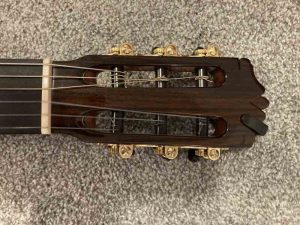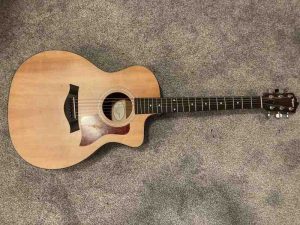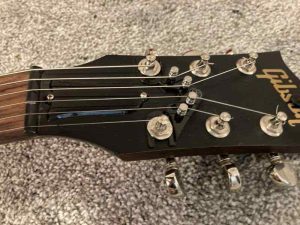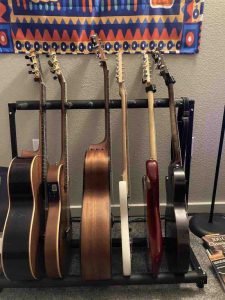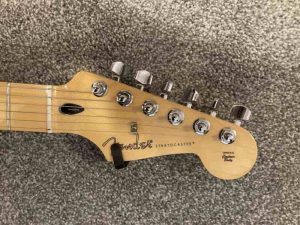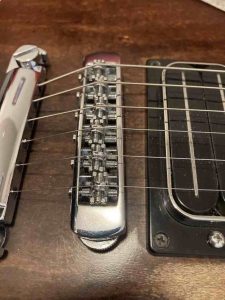What is the order of guitar strings?
If you’re a guitar player, then you know that strings are one of the most important parts of your instrument. After all, without strings, you wouldn’t be able to make music! But did you know that there’s more to guitar strings than meets the eye?
In this blog post, we’ll explore the mysteries of guitar strings, including how they’re ordered, what they’re made of, and how to tune your guitar so that it sounds its best.
What Order Do Guitar Strings Go In?
There are six main strings on a guitar, which are typically tuned to the following notes:
- E
- A
- D
- G
- B
- E.
The lowest string (E) is typically tuned to a lower pitch than the other strings, and the highest string (E) is typically tuned to a higher pitch. The strings can be tuned to different pitches depending on the style of music being played. For example, some guitars may be tuned down a half-step or full step for certain songs.
Want to learn more about the guitar strings order? Consider taking guitar lessons. Learn more about all of the benefits of guitar lessons by watching the video below:
https://www.youtube.com/watch?v=WfZ64yEGPok
Order of Strings on a Guitar and Other Essential Information
Throughout the course of guitar history, the guitar has changed and evolved in ways that shape what we listen to this very day. The way we tune the guitar has also changed from the 16th century up to now.
Even today, the tuning on the guitar varies from genre to genre. While all of that mentioned is important in terms of the guitar’s history, we will focus on what we call “standard tuning” of a six-string guitar.
Guitar Strings Order
Whether you are learning to play an acoustic, classical, or electric six-stringed guitar, standard tuning is the same for each. To make it easier, here’s a list of the guitar string order and additional information.
The guitar strings in order are listed highest to lowest in terms of pitch; this is what we call “standard tuning” and what we are focused on.
- E string (1st) – Note on Staff Notation: E4 – 329.63 Hz
- B string (2nd) – Note on Staff Notation: B3 – 246.94 Hz
- G string (3rd) – Note on Staff Notation: G3 – 196 Hz
- D string (4th) – Note on Staff Notation: D3 – 146.83 Hz
- A string (5th) – Note on Staff Notation: A2 – 110 Hz
- E string (6th) – Note on Staff Notation: E2 – 82.41 Hz
*1st String is at the bottom of the picture and 6th is at the top
Structure
The structure of guitar strings are primarily made of steel. If you play a nylon stringed guitar (also known as classical, flamenco, or Spanish guitar), the strings will be made of a plastic known as nylon. Certain guitars, depending on their strings, could be better or worse for a beginner.
For instance, I usually recommend a nylon string guitar for beginners because it is easier to push down on nylon strings as opposed to steel strings. Steel strings are “sharper” and can hurt a little bit more. Steel string acoustics and electric guitars use steel strings.
*Acoustic Steel-Stringed Guitar
*Electric Guitar (Steel Strings)
*Classical Guitar (Nylon Strings)
Tuning Secrets
Is there a guitar strings tuning order? Tuning your guitar strings can be a frustrating skill to develop at first, but the good news is that it is very easy to get used to and not difficult to get going.
Today, you can find several – if not hundreds – of free guitar tuning apps on your phone. The app I use and recommend to my students is called “Guitar Tuna”. Using an app makes tuning your guitar intuitive as opposed to doing it by ear. Many guitar teachers recommend that it is important that you learn to tune your guitar with an app and later with your ears after you have become more familiar with the strings and the pitches.
So, “why do some strings get out of tune more than others” and, “what are some ways to stay better in tune” are just a few questions I have students ask me. There are some add-ons to your guitar that can help, but there is one trick I have learned that requires no additional gear. We’ll first start with gear and materials.
Guitar Care
Since guitars are made from wood, they do adjust according to humidity and other temperature factors. A basic rule is that you don’t want to leave your guitar in any extreme temperature changes. I would avoid the garage, outdoors, or even the car while you go shopping. This can damage the wood and really affect the guitar’s tuning and tuning stability. Leave your guitar(s) in a safe environment such as your home.
String Stability
Throughout my 15 year career, I’ve found that certain strings do hold tuning better. Steel strings are more stable than nylon strings. Also, certain brands make high-end strings that not only sound better, but are more durable and stay in tune longer. Make sure you change your strings at LEAST once every 6 months. Of course this is dependent on many factors. String technology nowadays really increases the durability of the strings.
Additional Gear
Some electric guitars come with “locking tuners” or tuners that lock at the top. This provides an even greater tuning stability because the guitar strings will not slip around while inside the tuners. If your electric guitar doesn’t come with locking tuners, it’s always a great and inexpensive way to upgrade your guitar and make it a lot more fun to play.
*Fender guitar with locking tuners
A more uncommon fix is to use what is called a “String Butler”. The String Butler is only available on select guitars but has proved to me that it improves my tuning stability specifically on my Gibson Les Paul. The idea of this device is that it straightens the strings from the nut and has a rolling end that guides the string to its respective tuner. A rolling bridge is another great example and basically provides the same idea but on the lower part of the guitar.
*String Butler on my Les Paul
*Rolling Bridge replacement on my Les Paul
Guitar Strings Tuning Order
The evolution of guitar tuning has led us to today where we don’t only have to tune in “standard tuning” but a plethora of many other tuning configurations. My advice is that you learn how to play in standard tuning first, then try alternate tunings for your guitars.
Look into a lot of other gear that will help the tuning stability as well, because you don’t always want to be re-tuning your guitar. Take care of your guitar and avoid areas of extreme temperature change. Most of all find a guitar you love and try different brands of strings. Find what works for you!
Now that you know what the guitar strings in order is, and some inside tips for tuning, you’re off to a perfect start.
As a guitar player, it’s important to understand not only how to play your instrument but also how it works. In this blog post, we’ve covered some of the basics when it comes to guitar strings—including their order, structure, and how to tune your instrument so that it sounds its best. By understanding these concepts, you’ll be able to get the most out of your fretboard and make beautiful music!
Jorge Salas


